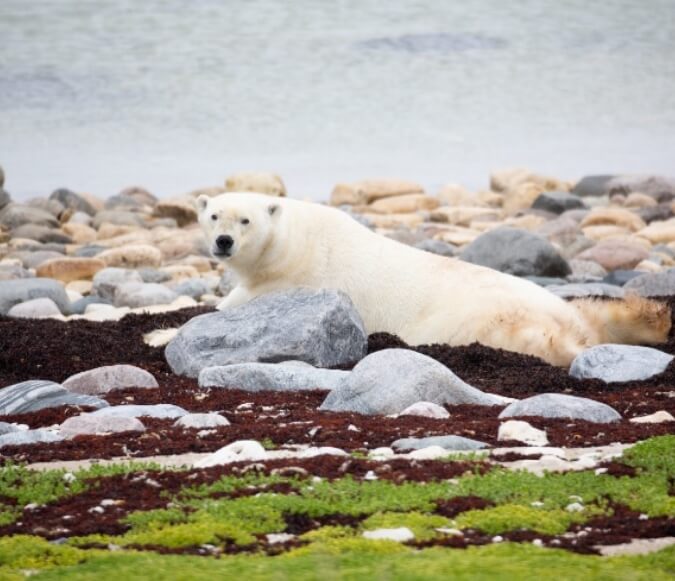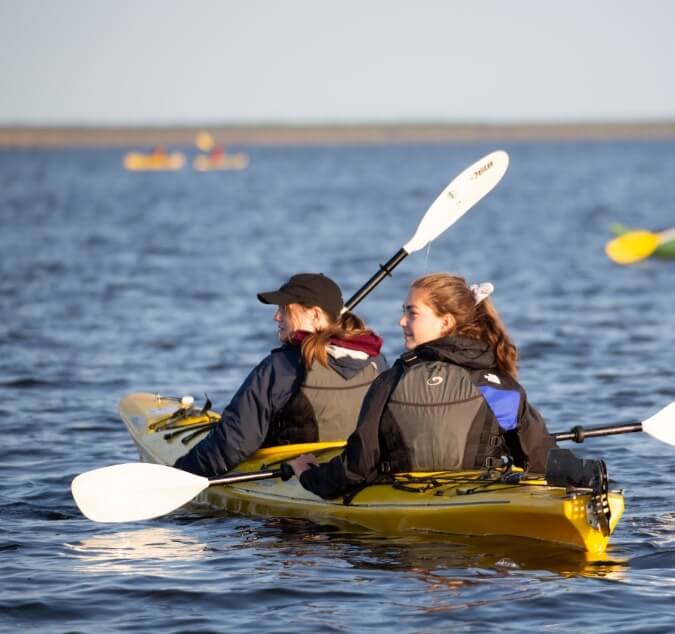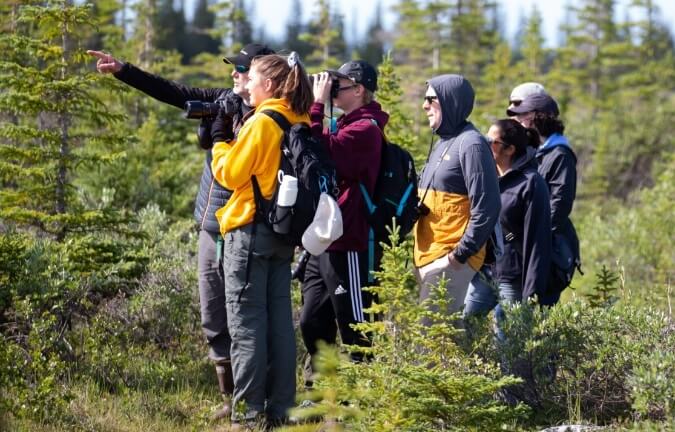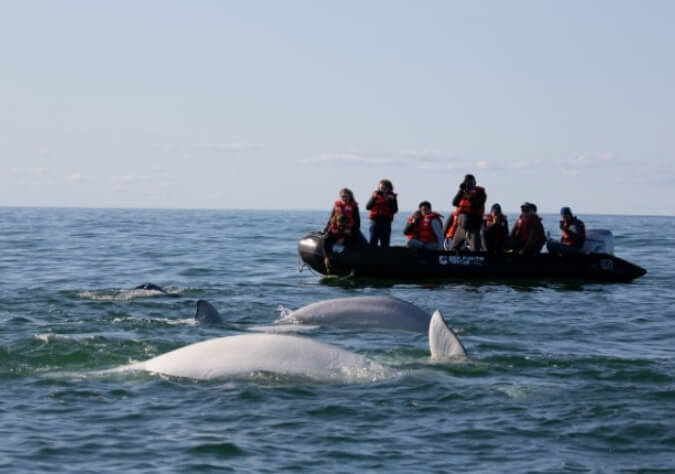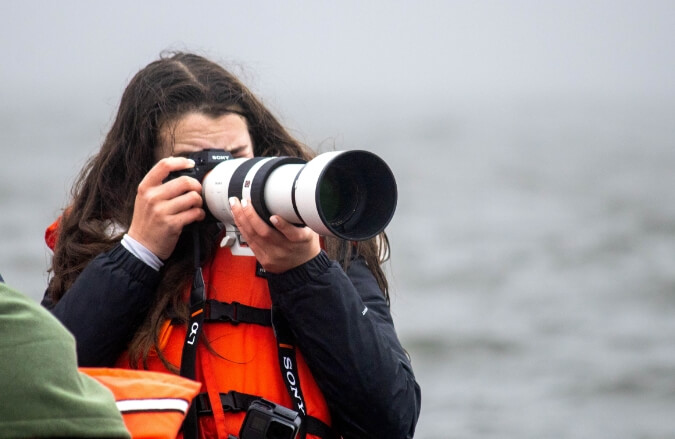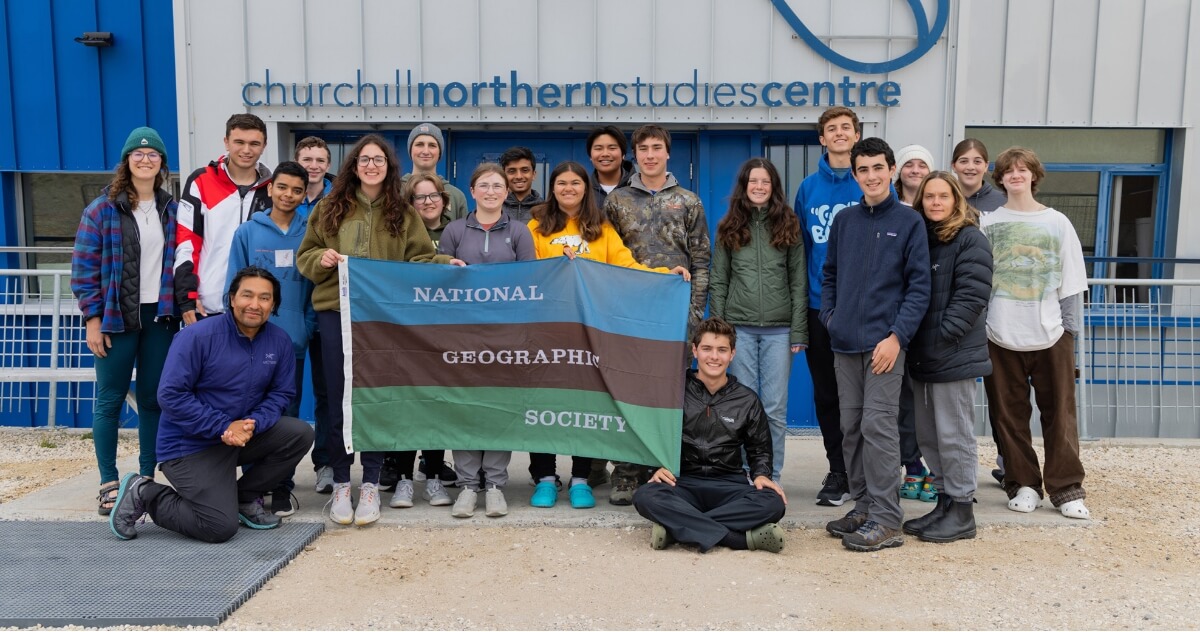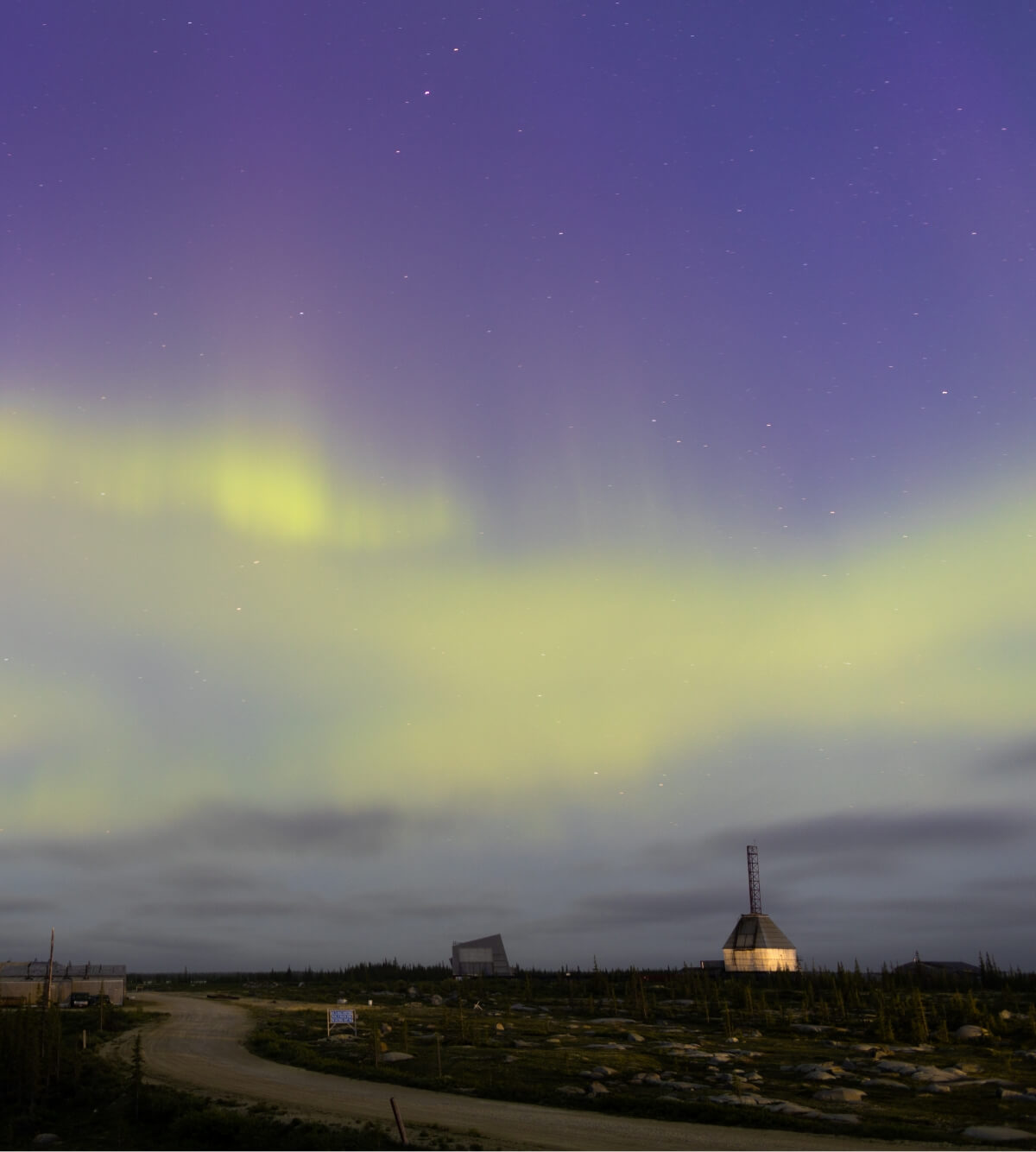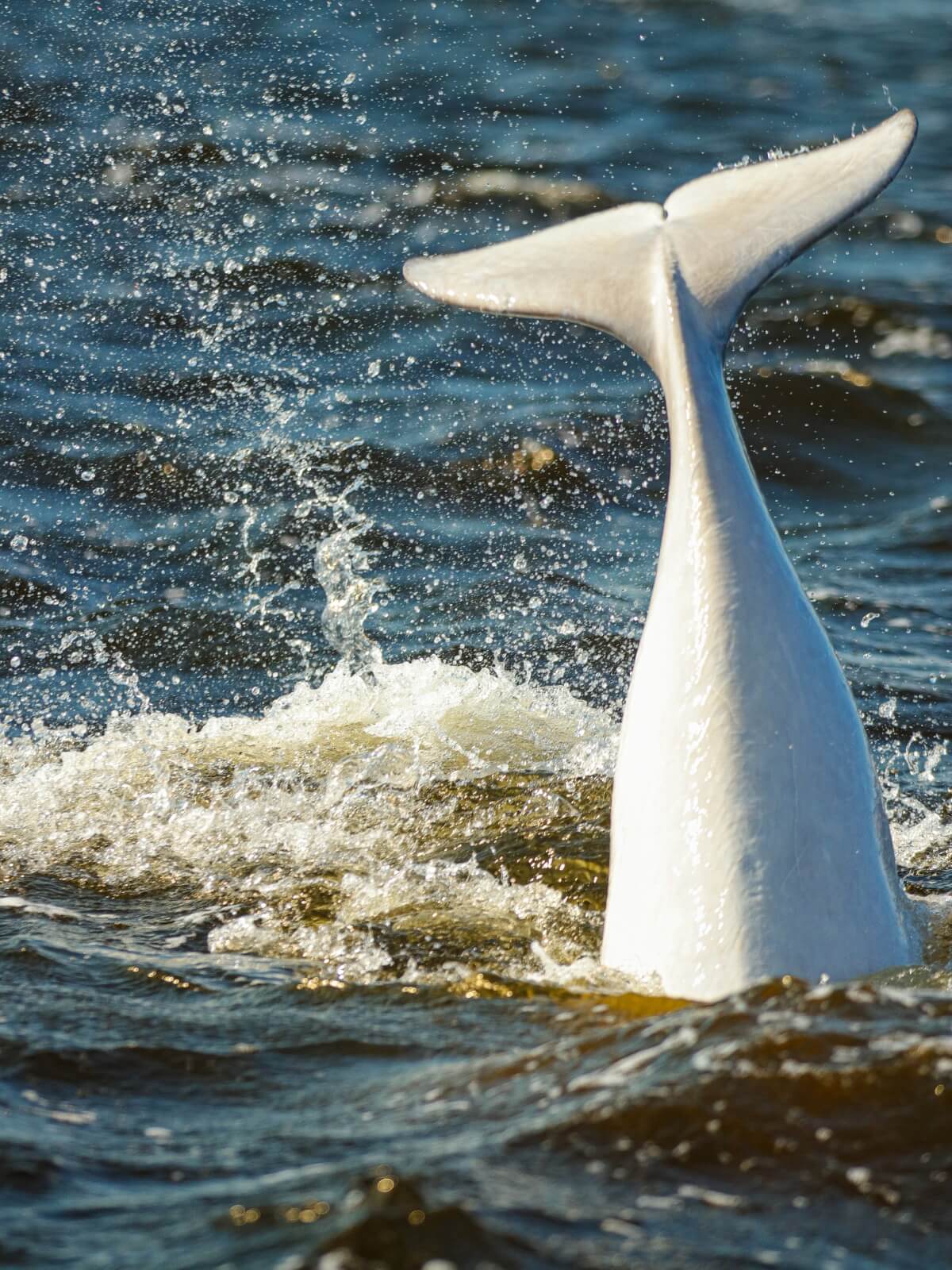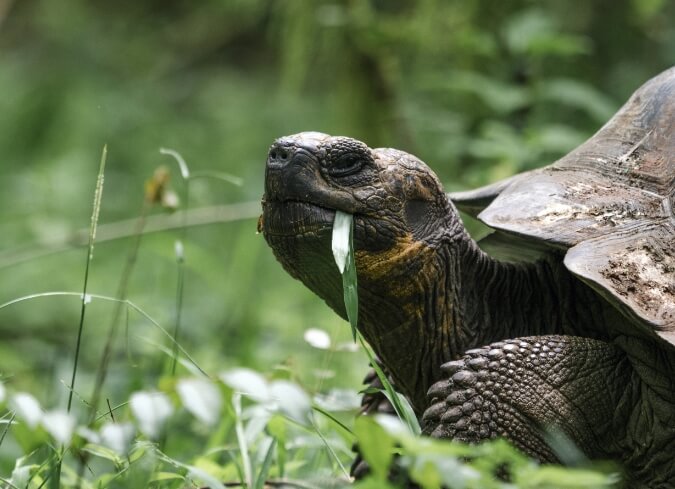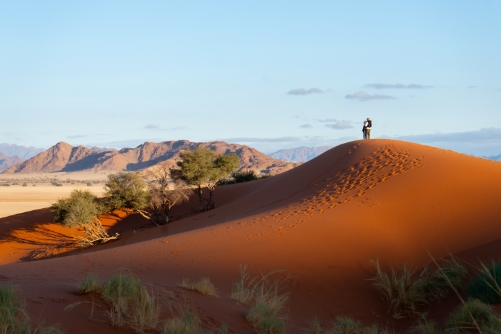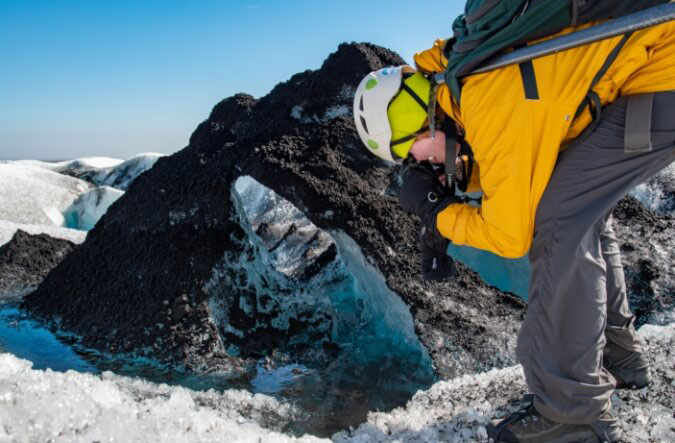Canadian ArcticPolar Bear Capital of the World
The Arctic tundra is one of our planet’s most stunning wildlife habitats: an endless snowscape in the winter that bursts with life when summer arrives, drawing migrating species such as caribou, beluga whales, and—most famously—polar bears. Travel to the Canadian Arctic this summer to experience this habitat and wildlife up close, using an Arctic research facility in Churchill, Manitoba, as your base. Choose either the Photography or Wildlife Conservation On Assignment, and delve into your focus area as you set out with a National Geographic Explorer to learn more about the unique adaptations that allow species to survive the extreme Arctic conditions, and how they and the communities that live there are coping with a changing climate.
Details
Highlights
- Head out in all-terrain vehicles across the tundra to track and photograph polar bears
- Take a dog sledding lesson and learn about the importance of this mode of transport
- Kayak with beluga whales and learn about scientists understanding of their “singing”
- Use your camera to capture shooting stars and, if lucky, the Northern Lights
Meet the Experts
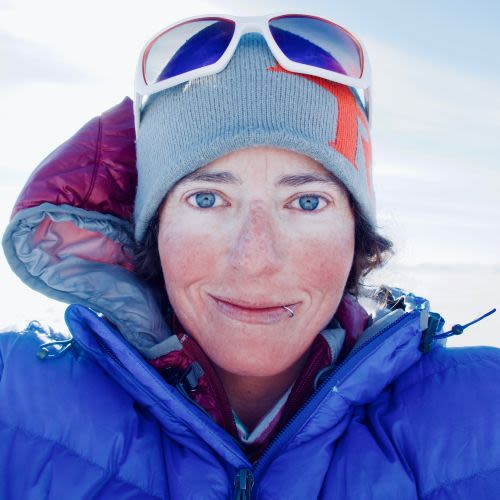 |
Alison Criscitiello, Ice Core Scientist (joining the July 28 departure) |
Alison Criscitiello is a National Geographic Explorer, ice core scientist and high-altitude mountaineer. She explores the history of sea ice in polar and high-alpine regions using ice core chemistry. This involves long months of living in a tent and drilling ice cores in places like Antarctica, Alaska and the Canadian high Arctic. Criscitiello’s work also focuses on environmental contaminant histories in ice cores from the Canadian high Arctic and the water towers of the Canadian Rockies. She is the Director of the Canadian Ice Core Lab and an Assistant Professor at the University of Alberta. In 2010, she led the first all-women’s ascent of Lingsarmo, a 22,818-foot peak in the Indian Himalaya. Criscitiello has received three American Alpine Club (AAC) climbing awards, the John Lauchlan and Mugs Stump alpine climbing awards, and she earned the first Ph.D. in glaciology ever conferred by the Massachusetts Institute of Technology. Criscitiello is the founder and co-director of Girls on Ice Canada. When not busy shivering for science, Criscitiello seeks out the cold for fun, working as a climbing ranger in the national parks and guiding expeditions to peaks in the Andes, Alaska, and the Himalaya.
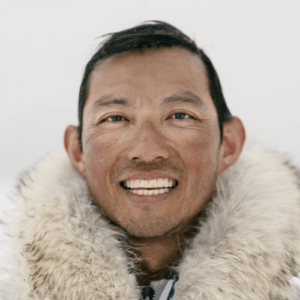 |
Kiliii Yuyan, Photographer (joining the August 3 departure) |
National Geographic Photographer, Kiliii Yuyan, illuminates stories of the Arctic and human communities connected to the land and sea. Informed by ancestry that is both Nanai/Hezhe (Indigenous East Asian) and Chinese-American, he has traveled across the polar regions working with Indigenous cultures, wildlife, and underwater. On assignment, he has survived a stalking polar bear, escaped pounding waves diving with sea otters, and found kinship at the edges of the world. Kiliii has photographed the cover of National Geographic Magazine twice, producing nine stories for National Geographic since 2015, including the July 2022 cover story on Native North America, migratory birds of the Arctic, and Greenland’s kayak culture. His story on Indigenous conservation from Mongolia to Palau will comprise the August 2024 issue of the Geographic. Kiliii is the 2023 recipient of the National Geographic Eliza Scidmore Award and is a National Geographic Explorer. Kiliii is also an award-winning contributor to TIME, Vogue, WIRED and Bloomberg Businessweek.
Itinerary
This itinerary represents our best projection of the group’s schedule. However, we may implement changes designed to improve the quality of the program.
- Departure
- Travel Day
Meet your fellow high school student travelers and one or more of your leaders in Minneapolis, Minnesota, and fly together to Winnipeg, Manitoba. Get to know your group and On Assignment team during an overnight in Winnipeg, enjoy a meal and your first night together, then fly northward to Churchill early the next morning.
- Churchill, Canada
- 2 days
Begin your Arctic adventure in the remote town of Churchill, nicknamed the “Polar Bear Capital of the World.” Dive into an in-depth orientation, take a walk in this former fur-trading outpost—home to fewer than a thousand people—and learn about everyday life on the icy edge of Hudson Bay. Head across the bay with naturalist guides to hike from the Prince of Wales Fort to the harbor at Sloop Cove, looking for bear and other wildlife along the way. Spy names carved into the rocks, marks left by early European fur trappers, and hear the history of some of these individuals as shared by our Parks Canada guides. Photograph the wilderness that surrounds the town during a hike along the rugged shores of Hudson Bay. Learn about the educational outreach initiatives being done by Polar Bear International and their studies on bear behavior, biology, and population distribution. Visit the Itsanitaq Museum for a look at life on the tundra through the ages, and check out the exhibits on narwhals, sometimes called the “unicorns of the sea.” Attend a presentation by Parks Canada guides from the local Indigenous community to learn more about the history of Churchill and the surrounding areas, including the troubling history of the forced relocation programs that began in the 1950’s. Practice the art of dog sledding on a lesson with a local dog sledding team and learn about the importance of this unique form of arctic transportation. Visit Churchill's Polar Bear Holding Facility and discuss their work to maintain human-polar bear coexistence through detaining and relocating the curious polar bears that wander into town.
- Churchill Northern Studies Centre
- 7 days
Head to the Churchill Northern Studies Centre, a research facility at the edge of the tundra that has hosted National Geographic-funded scientists and conservationists. Learn about the behavior of polar bears, arctic foxes, and other wildlife from the resident researchers, and get a firsthand look at how rising temperatures have affected the surrounding ecosystems.
Venture out onto the tundra on foot and in our all-terrain vehicle in search of polar bears, which arrive each summer with their cubs to roam the wilds surrounding Churchill, waiting for Hudson Bay to freeze over so they can hunt seals and other marine life on the pack ice. Under guidance from naturalist guides observe bears from a safe range, and photograph their white coats against the magenta fireweed that blankets the tundra each summer. Return to the Churchill Northern Studies Centre for a presentation by members of one of the remaining Indigenous fur trapping families in Churchill to hear about the practice of trapping and how the industry has changed in recent decades.
Encounter and photograph other wildlife who inhabit the far north, including caribou, red foxes, and a host of migratory birds. Kayak in waterways that teem with beluga whales, which migrate here in the thousands during the summer months to feed and give birth to their young. These marine mammals are known as the “canaries of the sea” for the singing noises they make. Watch them play at the water’s surface, and listen to their clicks and whistles as we learn how scientists are working to decipher their communications. With the help of our host biologists, investigate the ecological health of an estuary that serves as a temporary habitat for calving belugas. Present your On Assignment project and celebrate your time together in northern Manitoba before catching a flight from Churchill to Winnipeg.
- Return
- Travel Day
The next morning, fly together to Minneapolis, Minnesota, then, continue on to your final destination.
A Day in the Life: Churchill Northern Studies Centre
Every day will be a little different as we adjust to maximize wildlife viewing opportunities. Here is a snapshot of a day at the Churchill Northern Studies Centre. Please note that, although we work with local experts to optimize our chances of spotting wildlife, sightings cannot be guaranteed.
- Enjoy a buffet breakfast at the Churchill Northern Studies Centre
- Brief talk by researchers sharing field reports and the latest bear sightings
- Embark on a tide pooling excursion and photograph the unique landscape
- Head to the shores of Hudson Bay for a picnic lunch
- Join naturalists on a kayak trip into the Churchill River to spy and learn about the beluga who migrate to the estuary each summer
- Warm up with a hot chocolate in town at an old trading post-turned-cafe
- Head back for a shower and downtime before dinner
- Enjoy dinner at the Churchill Northern Studies Center
- Settle in for a presentation on the fur trapping industry from one of the few remaining active trappers in Churchill
- Group meeting to discuss the day and upcoming schedule
- Optional late viewing of the Northern Lights, weather permitting
What to Expect
- On Assignment Themes
Choose either the Photography or Wildlife Conservation workshop, and break into teams to delve further into your area of focus.
Photography Workshop: Create a portfolio showcasing the many facets of the tundra. Learn to photograph wildlife using polar bears and caribou as your subjects. Experiment with color as you frame your friends in fields of magenta fireweed, and capture vivid constellations across the night sky and—if we’re lucky—the swirling flares of the Northern Lights.
Wildlife Conservation Workshop: Examine the tundra’s complex ecosystems and learn about the uniquely adapted life that thrives in these harsh landscapes. Discuss the latest research on resident and migratory species and investigate the health of area waterways on tidepooling excursions. See firsthand how findings are being used to protect area wildlife from the effects of rising temperatures.
- Physical Activity
This is a physically active summer travel program that includes several active excursions in an Arctic environment. To get the most out of the program, you should be enthusiastic about outdoor activities such as light hiking and kayaking. You do not need to have previous experience to participate, but it is important that you have a desire to be physically active, and that you are interested in trying all activities.
- Lodging
In Churchill, we stay in a family-run hotel in the center of town. During our time at the research station, we stay in dormitory-style accommodations.
- Meals
We eat meals at the research station or residence, and take packed lunches while out exploring the tundra or kayaking. On occasion the group may stop at local cafes for snacks and warm beverages.
Please call our office with any questions about the physical nature of this program or to discuss specific accessibility and accommodation questions.
Related Programs

